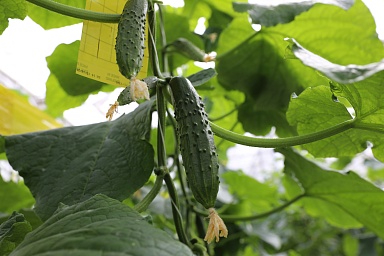Da Lat, renowned for its floral beauty and cool climate, has become a hub for high-tech greenhouse farming. While this innovation has driven agricultural success, it has also sparked debate over its environmental and urban impact. Recent discussions and research offer a comprehensive look into the benefits and drawbacks of greenhouse farming in Da Lat.
Benefits of Greenhouse Farming
- Enhanced Productivity: Greenhouses in Da Lat enable year-round cultivation of high-value crops, including flowers and vegetables. According to recent data, the region’s greenhouse area has expanded to over 5,688 hectares, with a notable increase in Lạc Dương district. This infrastructure supports a variety of crops, leading to significant improvements in yield and quality. For instance, controlled environments can boost plant productivity by 2 to 10 times, depending on the crop.
- Resource Efficiency: Greenhouse systems have proven to be resource-efficient. They reduce water usage by approximately 30% and fertilizer needs by around 40%. This efficiency is due to the precise control over nutrient delivery and water management, which minimizes waste and optimizes crop growth.
- Protection from Adverse Conditions: Greenhouses shield plants from extreme weather and pests, leading to higher quality produce and reduced reliance on pesticides. This protection results in less crop damage and better overall product quality.
Drawbacks and Environmental Concerns
- Urban and Environmental Impact: The proliferation of greenhouses has altered Da Lat’s landscape, raising concerns about its impact on biodiversity and ecological balance. Greenhouse development can contribute to soil erosion, increased runoff, and potential flooding, as reported by experts. Additionally, the extensive use of greenhouses has led to changes in local scenery and a reduction in natural habitats.
- Urban Planning Challenges: The expansion of greenhouse farming within urban areas of Da Lat poses significant challenges. The local government has noted a reduction in greenhouse area in central Da Lat, with plans to decrease it by 20% by 2025. The issue is exacerbated by the fact that many greenhouses are situated on land not designated for agricultural use, which complicates urban planning and land management.
Expert Recommendations
- Sustainable Development: Experts like PGS-TS Mai Văn Trịnh from the Institute of Agricultural Environment advocate for integrating greenhouse farming into broader urban and environmental planning frameworks. This includes selecting suitable locations that minimize ecological disruption and adhere to landscape conservation standards.
- Regulatory Measures: To address the environmental impact, regulations such as Decision No. 178/QĐ-UBND have been introduced to manage and regulate greenhouse expansion. These policies aim to ensure that greenhouse development aligns with sustainable practices and urban planning goals.
- Transition Strategies: As suggested by TS-KTS Trương Văn Quảng, transitioning greenhouse farming to suburban areas and implementing stringent guidelines for new developments can help mitigate urban congestion and environmental harm.
Greenhouse farming has brought remarkable advancements to Da Lat’s agriculture, enhancing productivity and resource efficiency. However, it also presents challenges related to environmental sustainability and urban planning. Balancing these factors is crucial for ensuring that greenhouse agriculture contributes positively to both the local economy and environment.










